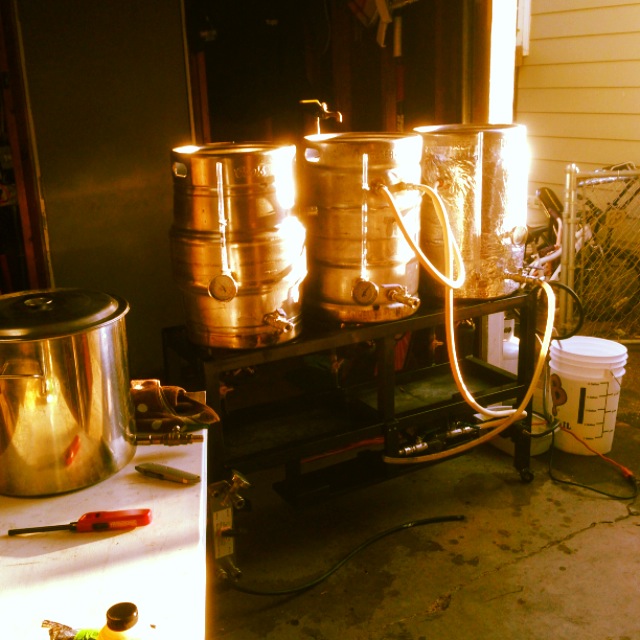micahwitham
Well-Known Member
Looking to convert an all manual brutus10 to Electric.
IF YOU HAD TO...what could you cut from Kal's design on the control panel and still get the job done?
Not looking for FULLY automated but rather something that will read MLT and HLT temps, 2 pumps, HERMS, fly sparging.
I'm thinking I wouldn't need
Alarms
Switch for which element
Pump lights (if I have the switches with on/off, lights seem nice but not necessary)
Here's what I think I do NEED:
On/Off master
Emergency shut off
PID's for MLT/HLT/Boil
Switches for Pumps 1&2
Convince me otherwise all you who are into this already.
Also, anyone looking to buy a brutus10 stand with jet tip burners, gas plumbed to back bar with airtight welds, and a regulator? Live in Minneapolis.
Micah

IF YOU HAD TO...what could you cut from Kal's design on the control panel and still get the job done?
Not looking for FULLY automated but rather something that will read MLT and HLT temps, 2 pumps, HERMS, fly sparging.
I'm thinking I wouldn't need
Alarms
Switch for which element
Pump lights (if I have the switches with on/off, lights seem nice but not necessary)
Here's what I think I do NEED:
On/Off master
Emergency shut off
PID's for MLT/HLT/Boil
Switches for Pumps 1&2
Convince me otherwise all you who are into this already.
Also, anyone looking to buy a brutus10 stand with jet tip burners, gas plumbed to back bar with airtight welds, and a regulator? Live in Minneapolis.
Micah














![Craft A Brew - Safale BE-256 Yeast - Fermentis - Belgian Ale Dry Yeast - For Belgian & Strong Ales - Ingredients for Home Brewing - Beer Making Supplies - [3 Pack]](https://m.media-amazon.com/images/I/51bcKEwQmWL._SL500_.jpg)













































 just like gas vs electric of all grain vs extract.
just like gas vs electric of all grain vs extract.
